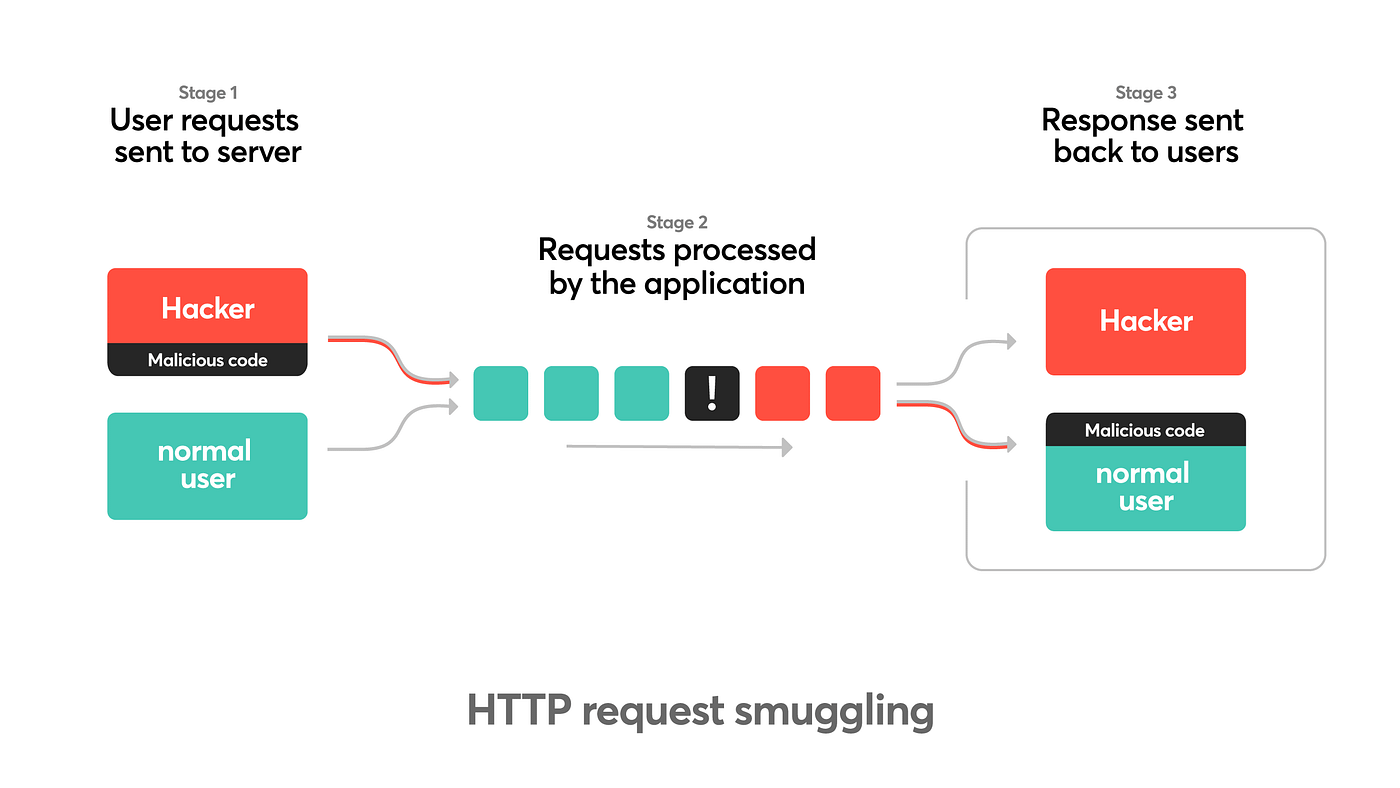
Request Smuggling - The End of HTTP
Request smuggling (aka HTTP desync) is when two hops in a web stack — typically a front‑end proxy/CDN and a back‑end application server — disagree about where one HTTP request ends and the next begins. That disagreement lets an attacker splice their bytes into another user’s request on a shared connection. The result can be anything from confusing caches and auth flows to outright takeover — not because one product is “broken,” but because HTTP/1.1 framing is ambiguous by design.
This post stays intentionally short. No payloads, step‑by‑steps, or red‑team stories here. If you want to learn it properly and safely, go straight to the resources that set the standard:
- PortSwigger Web Security Academy — Request Smuggling: free, hands‑on labs that teach the core desync concepts in a safe environment.
- HTTP/1.1 Must Die / http1mustdie.com: PortSwigger’s campaign (and whitepaper) explaining why upstream HTTP/1.1 is inherently unsafe and why the fix is architectural — not another patch. It’s genuinely excellent.
- James Kettle’s research on modern desync classes and defenses: if you’re after the deep theory and the latest bypasses, that’s where to read.
Act ethically. Only test systems you own or have explicit permission to assess.
Start here (recommended reading)
- PortSwigger Academy — What is HTTP request smuggling?
- http1mustdie.com — HTTP/1.1 Must Die: The Desync Endgame (campaign + whitepaper + sandbox lab)
- PortSwigger Research — HTTP/1.1 Must Die and related posts
If you work on web infrastructure, the takeaway is simple: prefer end‑to‑end HTTP/2 (or H3) and avoid replaying requests upstream over HTTP/1.1 wherever possible. The fewer parsers and translations in the path, the safer everyone is.